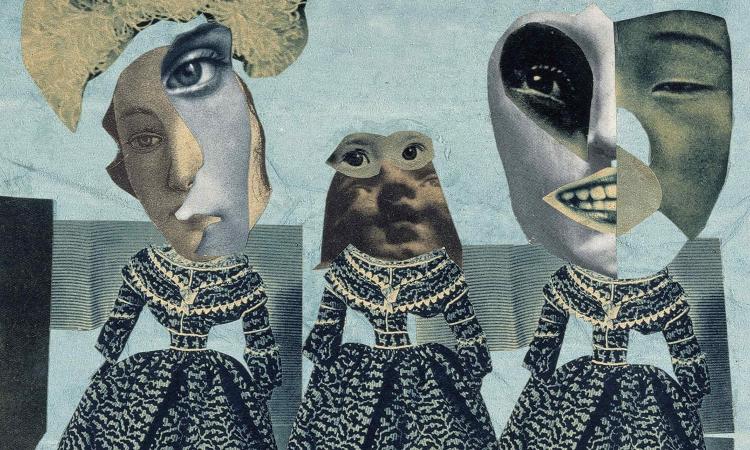DADAISM
Dadaism is an art movement that was most active from 1916-1923, which denounced traditional art and culture. Dadaist followed a destructive, cheeky and liberating approach to art.
Marcel Duchamp “works” – because he used readymades – clearly shows this:

A readymade porcelain urinal inscribed “R. Mutt 1917” as a sculpture at the 1917 the Society of Independent Artists exhibit.
This “work” meant to question what art is. Even after so many years, people are still “pissed off” at this.

L.H.O.O.Q. – a rectified readymade of the Mona Lisa.
He added mustache and beard to poke at this famous painting. Also the title of this is “L.H.O.O.Q.” which when read aloud in French, make the sound of “Elle a chaud au cul,” meaning, “She has a hot ass.”
 Hannah Hoch, “Fashion Show”
Hannah Hoch, “Fashion Show”
I feel that Dadaism, as an anti-art, is pretty nonsensical but it is also fairly interesting. Even though the main purpose was to mock culture and society at that point in time, it kind of “gave birth” to surrealism as well as contributed greatly in graphic design.
EL LISSITZKY
“Lazar Markovich Lissitzky (1890 – 1941), better known as El Lissitzky, was a Russian artist, designer, photographer, teacher, typographer, and architect.” He was very influential in the constructivist art movements.

He developed a painting style he called PROUNS where abstract geometric shapes were used to define the spatial relationships of his compositions.
I feel that the works of El Lissitzky is really powerful as he only uses geometric shapes, coupled with a small range of colours in his art that speaks political messages.
RHYMES
The Wheels on The Bus
The wheels on the bus go round and round,
Round and round,
Round and round.
The wheels on the bus go round and round,
All day long.
The horn on the bus goes beep, beep, beep,
Beep, beep, beep.
Beep, beep, beep.
The horn on the bus goes beep, beep, beep,
All day long.
The wipers on the bus go swish, swish, swish,
Swish, swish, swish,
Swish, swish, swish.
The wipers on the bus go swish, swish, swish.
All day long.
The people on the bus go chatter, chatter, chatter,
chatter, chatter, chatter,
chatter, chatter, chatter
The people on the bus go chatter, chatter, chatter,
All day long.
Followed by baby, bell, etc. Generally the song is sung with reference to common objects or people that one might find on a bus.
Other variations of this rhyme are “Here We Go Round The Mulberry Bush”, “Here We Go Round The Bramble Bush” or even our own version.
There Was a Crooked Man
There was a crooked man, and he walked a crooked mile.
He found a crooked sixpence upon a crooked stile.
He bought a crooked cat, which caught a crooked mouse,
And they all lived together in a little crooked house.
CONCEPTUALISATION
For the rhyme “the wheels on the bus”, I have thought about using geometric shapes like in El Lissitzky’s work to represent these objects and people to bring across a message of people watching/observant and how they relate in this journey.
Whereas for the “crooked man”, I have thought about using like a photomontage style like in Dadaism, since it is about a story of a dishonest man who gets what he deserve – a crooked existence.
I have yet to decide on which rhyme would be better for this project and I am still open to feedback!